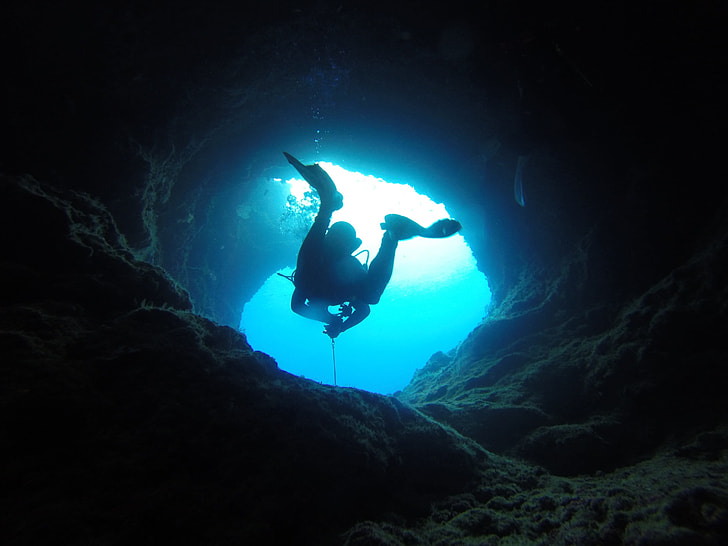A thrilling adventure that transports you to the enigmatic world below the surface is cave diving. It’s an expedition into uncharted territory, where each dive uncovers a fresh narrative and a previously undiscovered beauty. Cave diving is one of the most difficult and possibly dangerous types of diving, despite its excitement.
Fears and doubts are common among those who are drawn to cave diving. They are afraid of getting lost, of running out of air, or of the dangers of diving in a place that is so small and dim. These are legitimate worries that have the potential to ruin what ought to be an amazing experience.
But don’t allow these anxieties to stop you! Cave diving can be very rewarding and safe if done with the proper skills and knowledge. The safe cave diving techniques you need to ensure the enjoyment and safety of your underwater explorations are covered in this article.
Why Cave Diving?
The Allure of the Unknown
Unquestionably, there is a certain allure to the unknown. Uncharted territories on Earth include caves, with underwater caves holding even greater mystery. There is a compelling need to discover these hidden realms, particularly for individuals who are naturally curious and adventurous. You’re not just diving when you go cave diving; you’re exploring a world that not many people have seen.
The Thrill of Discovery
Every dive offers a fresh experience. Every cave has its unique character, be it in the creatures, colors, or formations. Many cave divers are motivated by the thrill of pushing their limits and learning something new. It’s about the stories you bring back, not just the dive.

The Challenges of Cave Diving
The Fear Factor
Surmounting fear is one of the most difficult cave diving challenges. Venturing into a dimly lit, enclosed area can evoke fear. What occurs if an error occurs? If you get lost, what then? Although these anxieties are normal, they can be controlled with the appropriate planning and attitude.
The Technical Difficulties
Basic diving skills are not enough for cave diving. Being a technical sport, it requires control, accuracy, and the ability to deal with unforeseen circumstances. Beyond what you learn in open-water diving, cave diving demands a special set of skills for everything from controlling your air supply to maneuvering through confined spaces.
The Physical Demands
Diving into caves can be physically taxing. Your body may suffer from the cold water, the cramped quarters, and the heavy equipment. Before you dive, you must be in good physical shape and be aware of the demands of cave diving.
Safe Cave Diving Techniques
1. Training is Key
Before you even think about cave diving, proper training is essential. Cave diving is not something you can just jump into with an open-water diving experience alone. You’ll need to take specialized courses that teach you how to handle the unique challenges of cave diving. These courses will cover everything from buoyancy control to emergency procedures, ensuring you’re well-prepared for any situation.
2. Never Dive Alone
Never diving alone is one of the most crucial cave diving guidelines. Always go diving with a friend who is just as skilled and knowledgeable. Having a partner in a cave can mean the difference between survival and death. Your friend can support you in times of need, help you navigate, and act as an extra pair of eyes to help you see potential hazards.
Learn about the dangers of caving alone.
3. Plan Your Dive
When cave diving, preparation is essential. You must have a well-defined plan that outlines your dive route, air supply, and exit strategy before you dive. Follow your plan and refrain from taking unwarranted chances. Recall that it’s simple to become lost in a cave, so having a well-thought-out plan is your best defense.
4. Use a Guideline
In cave diving, a guideline is your lifesaver. When you enter the cave, you lay down a physical line that you can use to navigate back. Utilize a guideline at all times, and never let it go. It’s your link to the way out, and it’s essential to your safety in the dim, disorienting cave environment.
5. Monitor Your Air Supply Closely
When cave diving, air control is essential. In contrast to open water diving, where you can surface dive if you run out of air, cave diving requires you to go back the way you came. This implies that you must keep a close eye on your air supply and make sure you have enough to escape. The “rule of thirds” is a popular guideline that states you should use one-third of your air to enter, one-third to exit, and one-third to reserve for emergencies.
6. Stay Calm and Collected
When caving, panic is your worst enemy. It is important to remain composed and use sound judgment if something goes wrong. In a cave, panic can cause bad decisions that can prove to be fatal. Utilize mental strategies and breathing exercises to maintain your composure under pressure.
7. Regular Equipment Checks
When cave diving, your equipment is your lifeline, so it needs to be in excellent shape. Make sure to inspect all of your equipment, including your fins, lights, and regulator, before every dive. Make sure everything is working properly by keeping an eye on your equipment during the dive. Appropriate upkeep and inspections are necessary for safe cave diving.
The Emotional Side of Cave Diving
Overcoming Fear
It’s common to experience fear before a cave dive. The isolation, the darkness, and the unknown can all be too much to handle. But keep in mind that fear is a normal emotion that can be controlled. You’ll gain confidence with each dive, and the things that frightened you will eventually become just another part of the experience.
The Sense of Accomplishment
Nothing compares to the satisfaction you get after finishing a difficult dive. It’s tremendously satisfying to feel like you accomplished something by facing your fears and discovering a new world. It serves as a reminder that you are more capable than you may realize and that you can accomplish great things if you put in the necessary planning.
The Bond with Your Dive Buddy
You and your dive partner develop a unique bond when you go cave diving together. You develop a strong sense of trust and friendship because you are dependent on one another for support and safety. It’s an incredibly fulfilling experience that transcends words—one of the best things about cave diving.
People Also Like to Know About
How Safe is Cave Diving?
Cave diving can be safe if you follow the proper techniques and guidelines. It’s all about preparation, training, and respect for the environment. By adhering to safe cave diving techniques, you can minimize risks and enjoy your dives safely.
What Skills Do You Need for Cave Diving?
To become a good cave diver, you need strong buoyancy control, excellent navigation skills, and the ability to manage your air supply. You also need to be able to stay calm under pressure and make quick, informed decisions. These skills are developed through specialized training and experience.
What Makes a Good Cave Diver?
A good cave diver is someone well-trained, disciplined, and aware of their limitations. They plan their dives meticulously, respect the environment, and always dive with a buddy. Most importantly, they know how to stay calm and make sound decisions even in challenging situations.
Conclusion
Cave diving is a unique and thrilling adventure that offers a glimpse into a hidden world. But it’s not without its challenges. By following safe cave diving techniques, you can explore these underwater caves with confidence and peace of mind. Remember, the key to a successful cave dive is preparation, training, and staying calm. With these tools in hand, the mysteries of the deep are yours to discover.
Learn about planning a caving trip.
